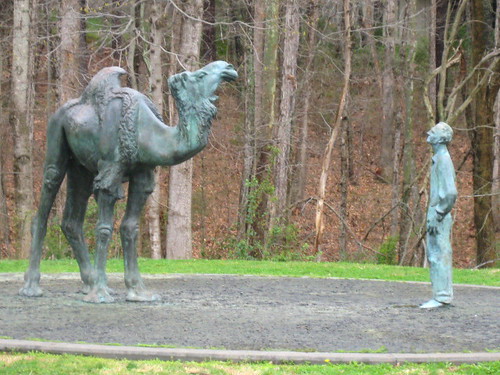Problem 8 The obsolete unit, the roentgen (R), is defined as 2.08 x 109 ion pairs produced in 0.001 293 g of dry air. (This is 1 cm3 of dry air at standard temperature and pressure.) Show that if the average energy required to produce an ion pair in air is 33.7 eV (an old value), then 1 R corresponds to an absorbed does of 8.69 x 10-3 Gy and that 1 R is equivalent to 2.58 x 10-4 C kg-1.
 |
| Asimov's Biographical Encyclopedia of Science and Technology, by Isaac Asimov. |
…The great moment that lifted Roentgen out of mere competence and made him immortal came in the autumn of 1895 when he was head of the department of physics at the University of Wurzburg in Bavaria. He was working on cathode rays and repeating some of the experiments of Lenard and Crookes. He was particularly interested in the luminescence these rays set up in certain chemicals.You can learn more about X rays in Chapter 15 (Interaction of Photons and Charged Particles with Matter) and Chapter 16 (Medical Use of X Rays) in Intermediate Physics for Medicine and Biology.
In order to observe the faint luminescence, he darkened the room and enclosed the cathode ray tube in thin black cardboard. On November 5, 1895, he set the enclosed cathode ray tube into action and a flash of light that did not come from the tube caught his eye. He looked up and quite a distance from the tube he noted that a sheet of paper coated with barium platinocyanide was glowing. It was one of the luminescent substances, but it was luminescing now even though the cathode rays, blocked off by the cardboard, could not possibly be reaching it.
He turned off the tube; the coated paper darkened. He turned it on again; it glowed. He walked into the next room with the coated paper, closed the door, and pulled down the blinds. The paper continued to glow while the tube was in operation…
For seven weeks he experimented furiously and then, finally, on December 28, 1895 [116 years ago this week], submitted his first paper, in which he not only announced the discovery but reported all the fundamental properties of X rays...
The first public lecture on the new phenomenon was given by Roentgen on January 23, 1896. When he had finished talking, he called for a volunteer, and Kolliker, almost eighty years old at the time, stepped up. An X-ray photograph was taken of this hand—which shows the bones in beautiful shape for an octogenarian. There was wild applause, and interest in X rays swept over Europe and America.












